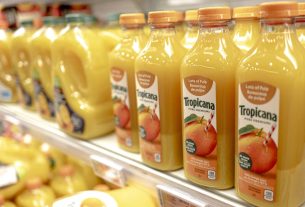|
Getting your Trinity Audio player ready...
|
Online grocery and meal delivery services have become increasingly popular in the US, especially in light of the COVID-19 pandemic. However, many startups have failed to find a profitable business model for fast grocery delivery, which has become one of the fastest-growing sectors of the wider food technology vertical, which is expected to exceed $340 billion in market value by 2027, according to a recent analysis from Emergen Research.
On the sweet side of the pie, Meati Foods secured $150 million in funding for its mushroom root-based meat, which is considered a leading alternative protein food product by food tech journalists and reviewers. Planted received $72 million in funding for its vegan chicken whole cuts, while Singapore’s first oat milk product, Oatside, raised $65 million in funding.
But those successes don’t describe the full flavor of the market. In the first quarter of 2023, investment values and count in this sector were down 63% and 28.5%, respectively, compared to the previous quarter, according to a report by PitchBook.
So how will the last mile of the food tech industry, those that deliver our ingredients and meals, succeed in a market that is both finding its way and seeing a downturn in fortunes?
I asked Nikita Cherkassky, COO of Qummy and co-founder of Manna Coffee, for recommendations that can help grocery delivery services to succeed in 2023. As a serial entrepreneur in the food tech industry and an independent expert for startups inspired to create solutions in this area, Cherkassky has analyzed the business models used by the likes of GoPuff, Gorillaz, Food Rocket, Tiggy, and GoGrocer.
Don’t Take a Big Bite of The Big Apple
There are many ways to succeed in business, and one of the more obvious is to create a product or service that appeals to the particular needs of a city that has an affluent population and a niche, local need as a beachhead for fast growth. Another is to launch locally, improve, grow, and then go big by expanding to a major metropolitan area. In the US, New York is an easy target for both of these examples.
But according to Cherkassky, New York is the best city for an ultrafast failure.
“New York City is an attractive market for grocery delivery services, with a high population density and a large number of potential customers,” Cherkassky said. “However, it is also one of the most expensive cities in the world, with high costs for leases, customer retention, and marketing. Many businesses that have expanded from New York have failed, including Buyk ($46 million), Fridge No More ($17 million), and JOKR ($170 million).”
And while in many areas of life, being cosmopolitan is positive, it can also be a double-edged sword.
“The multinational nature of the city makes it difficult to cater to everyone,” Cherkassky said. “The food baskets differ dramatically depending on the neighborhood, and obtaining a license to sell alcohol is not easy. This means that beer cannot be sold together with liquor, resulting in a loss of a sizable niche.”
New York is one of the cities on the top of most startups’ lists of launch or expansion targets. In last-mile grocery and meal delivery, however, it seems like it isn’t the best choice. So what are some of the better options?
“Three cities in the US that are better suited for launching a project are Chicago, Illinois, and Austin,” Cherkassky said. “Chicago has a good population density, and lease prices are several times lower than in New York. The city’s climate, which includes rain, fog, overcast conditions, and extreme cold in the winter months, makes delivery services very popular. Austin is one of the fastest-growing cities in the US, and there is a demand for grocery deliveries from tech-savvy customers.”
Focus on Fusion, and Don’t Forget to “Go Dark”
In the US, delivery businesses cannot operate online only. Offline grocery retail performs consistently well in the US, with many Americans preferring to shop at physical stores. To succeed, online grocery delivery services need to establish strategic partnerships with offline retailers.
One option is to allow offline purchases in dark stores.
“Dark stores, also known as ‘dark supermarkets,’ are retail spaces that are closed to the public and used solely for the purpose of fulfilling online orders,” Cherkassky said. “Unlike traditional retail stores, dark stores are not typically open to customers to browse and shop in person. Instead, they serve as fulfillment centers where employees pick, pack, and prepare orders for delivery or pickup.”
Dark stores have become increasingly popular in recent years, particularly in the grocery industry, as online shopping and delivery services have grown in popularity.
“In addition to offering offline purchases in dark stores, grocery delivery services can establish a customer area in these locations,” Cherkassky said. “This enables customers to pick up their orders directly from the store, saving time and reducing delivery costs. This involves establishing a small separate room, typically around 160 square feet, with a couple of fridges and a cash register. Customers can purchase groceries in-store and have them delivered to their homes.”
Another option is to find a major offline retailer to partner with.
“Food Rocket has partnered with Circle K, a gas station chain with thousands of convenience stores,” Cherkassky said. “Food Rocket can use Circle K’s infrastructure to establish a mini dark store and add goods that are already sold in the store to its assortment. This approach can help companies to expand more quickly than their competitors.”
Offer Subscription Services and Loyalty Programs
Subscription businesses are appealing to VCs because they offer predictable and recurring revenue streams, high customer lifetime value, scalability, and valuable data insights. They provide a steady, predictable revenue stream that is more reliable than one-time sales, and consumers have shown how much they love this approach to buying products and services. According to Zuora, the subscription economy has grown nearly 6x in the last nine years (more than 435%).
“Subscription-based solutions often have a higher customer lifetime value and can scale more easily than businesses that rely on one-time sales,” Cherkassky said. “Subscription businesses also have access to valuable data about their customers that can be used to improve the product or service and make informed business decisions.”
The benefits increase further if you also offer a loyalty program.
“Pairing subscription benefits with the higher customer value, lower churn, and longer customer lifetime values that loyalty programs offer is a 5-star approach for those wishing to land bigger-than-expected investment rounds,” Cherkassky said.
Use Data Analytics to Optimize Operations
In addition to optimizing operations and reducing costs, data analytics can also help grocery delivery services to improve customer satisfaction.
“By analyzing customer feedback and behavior, companies can identify pain points and areas for improvement,” Cherkassky said. “This can help to improve the customer experience, increase retention rates, and attract new customers through positive word-of-mouth.”
Data analytics can also help grocery delivery services to identify trends and patterns in customer behavior.
“Through detailed analysis and data science, the data you need to run your startups can also inform your business decisions and help you stay ahead of competitors,” Cherkassky said. “Overall, data analytics is a valuable tool for grocery delivery services to improve their operations, reduce costs, increase profits, and improve customer satisfaction.”
A Recipe for Success in a Down Market
In conclusion, it is true that the online grocery and meal delivery sector is growing rapidly in the US, but also clear that startups in this niche need to find a profitable business model to succeed.
And while all the usual successful startup practices and advice are in play at all times, by paying attention to the advice given by experts such as Cherkassky, last-mile grocery and meal delivery services can set themselves up to avoid failure and build successful businesses in 2023, despite the dip in the overall food tech market.
Stewart Rogers is a Senior Editor at Grit Daily. He has over 25 years of experience in sales, marketing, managing, and mentoring in tech. He is a journalist, author, and speaker on AI, AR/VR, blockchain, and other emerging technology industries. A former Analyst-at-large VentureBeat, Rogers keynotes on mental health in the tech industry around the world. Prior to VentureBeat, Rogers ran a number of successful software companies and held global roles in sales and marketing for businesses in the U.S., Canada, Australia, and the U.K.
A digital nomad with no fixed abode, Rogers emcees major tech events online and across the globe and is a co-founder at Badass Empire, a startup that helps digital professionals tap into their inner badass, in addition to being Editor-in-Chief at Dataconomy, a publication and community focused on data science, AI, machine learning, and other related topics.



